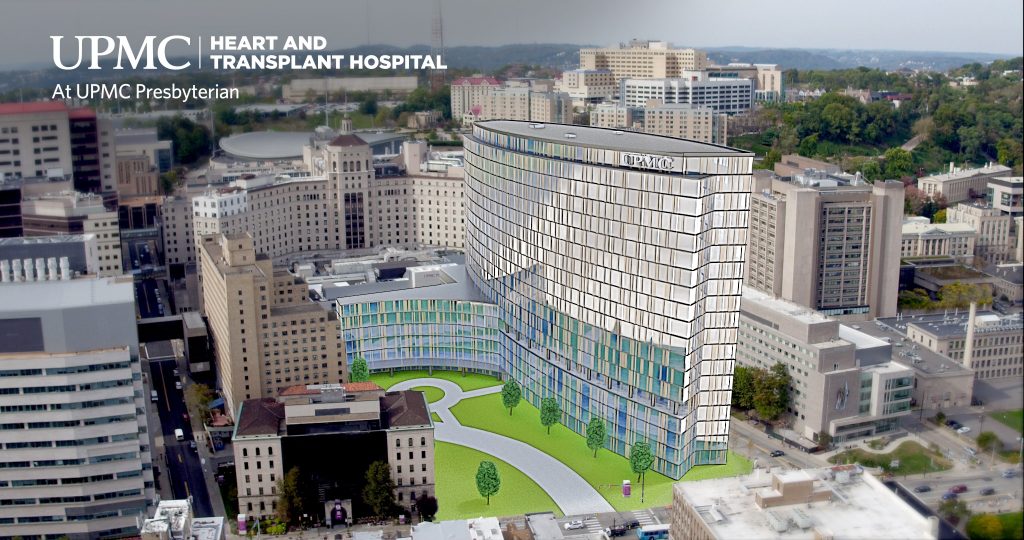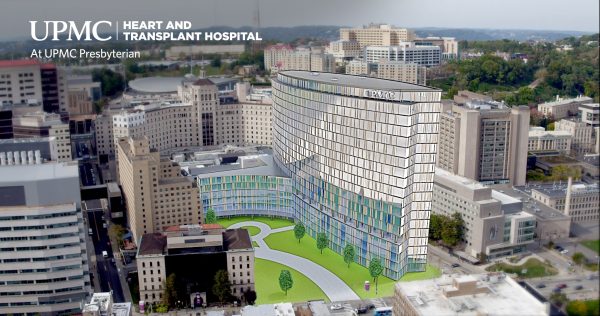 In 2016, most consultations between patients and Kaiser-Permanente Health Plan were virtual — that is, between consumers and clinicians who were not in the same room when the exam or conversation took place.
In 2016, most consultations between patients and Kaiser-Permanente Health Plan were virtual — that is, between consumers and clinicians who were not in the same room when the exam or conversation took place.
Virtual healthcare may be the new black for healthcare providers. Mercy Health System in St. Louis launched a virtual hospital in 2016, covered here in the Health Populi post, “Love, Mercy, and Virtual Healthcare.” Intermountain Healthcare announced plans to build a virtual hospital in 2018. And, earlier this month, UPMC’s CEO, Jeffrey Romoff, made healthcare headlines saying, “UPMC desires to be the Amazon of healthcare.”
UPMC, aka University of Pittsburgh Medical Center, is thus far the most ambitious virtual hospital plan, earmarking $2 billion to build three digital hospitals that will serve patients with healthcare needs for heart/transplantation, vision/rehabilitation, and cancer. The plan will be to bolster UPMC and Pittsburgh as an “exporter” of healthcare services, which would further consolidate the region as an economic healthcare center and UPMC as a Center of Excellence and specialty magnet.
When I learned this news, I contacted Dr. Rasu Shrestha, Chief Innovation Officer of UPMC and EVP, UPMC Enterprises. [In full disclosure, Rasu and I are members of the 2017 HIMSS Social Media Ambassador community, so I’m grateful for his collegiality through that tight-knit #HCSM {healthcare social media} tribe]. Rasu and I exchanged email messages about virtual hospital plans, and I share them with you here along with my commentary in the Health Populi Hot Points below the 3 Q&As.
JSK: Why “digital hospitals?” Why “now?” Why “3” of them?
DrRS: UPMC is capitalizing on the massive digitalization happening in healthcare by leveraging the power of data to derive actionable intelligence and augment care in ways never before imagined. The vision to build 3 digitally based specialty hospitals is a bold bet on the future, based on innovations in technology, science and medicine.
The 3 new specialty “hospitals within hospitals” will be the UPMC Heart and Transplant Hospital, UPMC Hillman Cancer Hospital and UPMC Vision and Rehabilitation Hospital – and these will perfectly complement the 3 UPMC specialty hospitals already in the city, Magee-Womens Hospital, Western Psychiatric Institute and Clinic, and Children’s Hospital of Pittsburgh. The 3 new specialty hospitals will offer next-generation treatments in patient-focused, technology-enhanced settings – and will set the stage for the innovative, digitally enhanced approaches to care in cancer, heart disease, transplantation, diseases of aging, vision restoration and rehabilitation, among many others.
JSK: What is it about UPMC’s DNA that supports this bold, innovative venture?
DrRS: The $2 billion investment for these 3 digitally based specialty hospitals is in addition to UPMC’s annual capital commitments of nearly $1 billion and will result in no increase in inpatient beds. Bold moves such as these historically built UPMC to be the organization it is today.
In 1973, a comprehensive reorganization of Western Psychiatric Institute and Clinic and the University of Pittsburgh’s Department of Psychiatry, under the leadership of Dr. Thomas Detre and Jeffrey A. Romoff, began a new era of research-based medicine in Pittsburgh — and set the stage for UPMC’s mission of outstanding clinical care, research, and teaching. Remarkable advancements in medicine, science and technology defined the path forward for UPMC. UPMC is home of Thomas E. Starzl, M.D., the “father of transplantation”. UPMC created one of the largest integrated community cancer networks in the U.S., providing world-class care and clinical research to more than 110,000 patients a year at over 60 locations. Additionally, we’re building on the DNA of UPMC as one of the top-ranked ophthalmology programs in the U.S. with world-renowned experts in vision therapies and interventions such as stem cell implantation, gene therapy, innovative pharmacologic approaches and the artificial retina. UPMC also has the largest rehabilitation network in western Pennsylvania, and one of the largest in the U.S.
Never content to rest on past accomplishments, UPMC continues to anticipate and prepare for the challenges facing academic and nonprofit medicine, and continues to push the envelope of innovative and entrepreneurial approaches to advance the science and art of health and care.
JSK: If we look through your tea leaves for what a medical center might look like 10 years from now, what do you see?
DrRS: The medical center a decade from today will use the power of data and algorithms to push the boundaries of cutting edge translational science, creating treatments and cures for the most devastating diseases; care pathways for personalized, effective and compassionate care – and newer care models that that will treat the person holistically – focusing not just on survival, but on thriving. The experience in the medical center will be profoundly human, with technology playing the crucial role of silently and elegantly being an enabler to better care. Health consumers will use the medical center only when needed, and the focus will be on maintaining health and wellbeing outside of the hospital walls, backed by algorithms that will track, predict and augment care, while incentivizing healthy behavior.
 Health Populi’s Hot Points: I began my career as a young health economist advising hospitals and doctors when same-day and outpatient surgery reached a tipping point. The hospital business was reshaping from inpatient migrating services to outpatient, taking advantage of new medical devices, digital imaging technologies and smaller footprint, lower-cost based clinics built off-campus.
Health Populi’s Hot Points: I began my career as a young health economist advising hospitals and doctors when same-day and outpatient surgery reached a tipping point. The hospital business was reshaping from inpatient migrating services to outpatient, taking advantage of new medical devices, digital imaging technologies and smaller footprint, lower-cost based clinics built off-campus.
We observed how services could be performed, safely and efficiently for both patient and clinician. At the same time, we drove lower per patient/per capita costs for these procedures. (This didn’t mean we were always saving money for the overall healthcare system, as health care reimbursement under volume-based payment had been and still is largely a game of “whac-a-mole,” explained in this Health Populi post from January 2010. But that’s another topic for another day).
A later wave of service delivery innovation leveraged the online world, after the walled gardens of AOL, Compuserve and Prodigy were felled, leading to the more open Internet. Hospitals created e-business units, piloting and then proving out digital business tools and scaling productivity solutions across the enterprise. We moved healthcare e-business into, well, just the business of healthcare.
Now, Mercy and Intermountain and UPMC are weaving that outpatient phenomenon with “e,” to go virtual in healthcare. And as important, we can go virtual for “health,” as Rasu points out in his response to my Q3 on the future of the hospital. He asserts, and I repeat verbatim, “Health consumers will use the medical center only when needed, and the focus will be on maintaining health and wellbeing outside of the hospital walls, backed by algorithms that will track, predict and augment care, while incentivizing healthy behavior.”
So we look forward to this next-gen innovation, baking Big and small D(d)ata into the convergence of outpatient and digital/virtual health, to inform and empower patients and clinicians. And, I daresay, help to forge a more sustainable, cost-effective U.S. healthcare system.





 Interviewed live on BNN Bloomberg (Canada) on the market for GLP-1 drugs for weight loss and their impact on both the health care system and consumer goods and services -- notably, food, nutrition, retail health, gyms, and other sectors.
Interviewed live on BNN Bloomberg (Canada) on the market for GLP-1 drugs for weight loss and their impact on both the health care system and consumer goods and services -- notably, food, nutrition, retail health, gyms, and other sectors. Thank you, Feedspot, for
Thank you, Feedspot, for  As you may know, I have been splitting work- and living-time between the U.S. and the E.U., most recently living in and working from Brussels. In the month of September 2024, I'll be splitting time between London and other parts of the U.K., and Italy where I'll be working with clients on consumer health, self-care and home care focused on food-as-medicine, digital health, business and scenario planning for the future...
As you may know, I have been splitting work- and living-time between the U.S. and the E.U., most recently living in and working from Brussels. In the month of September 2024, I'll be splitting time between London and other parts of the U.K., and Italy where I'll be working with clients on consumer health, self-care and home care focused on food-as-medicine, digital health, business and scenario planning for the future...